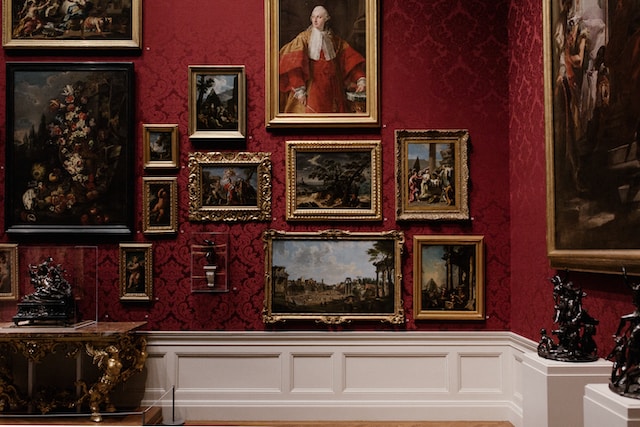The Vatican Museum Complex is rightfully considered one of the largest historical and art museums in the world. Here, along with the objects of ancient Egyptian art, modern works are presented. In total, there are about two dozen museums and museum halls on the territory of the Vatican, as well as the famous Sistine Chapel, in which, since the 15th century, cardinals have gathered for a conclave to elect a new Pope. It is famous all over the world for Michelangelo’s frescoes on Old Testament themes.
Despite its modest territory, the Vatican holds enormous treasures. Truly fabulous riches are stored in the Vatican, and you need to spend a few days just to examine them carefully, because they have been collected for many centuries. Over time, the collections have grown so much that the question arose about the need to create separate museums and the construction of new premises for their storage and display.
The Vatican itself is a huge museum, and not only a religious one. Here are collected amazing architectural monuments: the construction of the city began in the 14th century – the church of St. Paul was laid, the first residence of the high priest was erected, rebuilt in the 13th century. In the 19th century, the walls of the Vatican were erected, after which it developed as a state within a state and accommodated more and more cultural monuments from different eras.
Museums of the complex
Gregorian Egyptian Museum
The Gregorian Egyptian Museum, which displays a rich collection of Egyptian antiquities, including the sarcophagi of the pharaohs, basalt statues of the gods, the head of Pharaoh Mentuhotep (21st century BC), mummies, burial urns, papyri.
Gregorian Etruscan Museum
The Gregorian Etruscan Museum contains monuments of Etruscan, Greek and Roman art dating back to the 19th century BC. e.
Gregorian Museum of Secular Art
The Gregorian Museum of Secular Art, founded in 1844, but opened to the public only in 1970. It contains works of antiquity found on the territory of the Vatican (statues of Sophocles, Athena and Neptune).
Pio Clementino Museum
The Pio-Clementino Museum, founded by Clement XIV and Pius VI, is entirely dedicated to ancient art. Its exposition is represented by halls and galleries, whose names speak for themselves: Hall of the Greek Cross, Hall of the Rotunda, Hall of the Muses, Hall of Animals, Gallery of Statues, Gallery of Busts, Hall of Masks, Hall of Laocoon, Gallery of Apollo, Hall of Perseus or Canova, Hall of Hermes and Hall of Apoxyomen.
Chiaramonti Museum
The Chiaramonti Museum also houses works of antique art from the 5th century BC. B.C., ending with the 1st century A.D. e.
Raphael’s Stanzas
Raphael’s Stanzas (from Italian stanza – room) are three small rooms: Stanza de Senyatura (for the session of the papal court), Stanza d’Eliodoro (Pope’s quarters for receiving guests), Stanza del Inchendio (seat of the church tribunal) and the Hall of Constanta in the northern wing of the Vatican Palace, painted by Rafael Santi himself and his students at the beginning of the 16th century. We should also mention the Loggias of Raphael – 13 vaulted spans of the palace, decorated with frescoes based on the Old and New Testaments of the painting of Raphael Santi himself and his students.
Niccolina Chapel
The Niccolina Chapel is a small room that attracts the attention of travelers with frescoes by Beato Angelico dedicated to the life of St. Stephen.
Borgia Apartments
The Borgia apartments, built in the late 15th – early 16th centuries, are amazing with their paintings: the Hall of Sibyls, the Hall of the Mysteries of Faith, the Hall of Saints, the Hall of Sciences and Liberal Arts, the Hall of Faith Wonders and the Hall of Popes.
Vatican Pinakothek
The Vatican Pinakothek, opened in 1908, is the greatest collection of Byzantine and European painting of the 11th – 19th centuries. Here are the paintings of Leonardo da Vinci, Beato Angelico, Perugino, Titian, Caravaggio, Reni, Poussin, Carracci and others.
Vatican Library
The Vatican Library, founded in the 15th century by Pope Sixtus IV, contains more than 60 thousand manuscript volumes, 100 thousand author’s manuscripts, 7 thousand incunabula (the first printed books), 800 thousand prints, 100 thousand engravings, geographical maps and book miniatures.
Collection of Contemporary Church Art
The Contemporary Church Art Collection is an amazing gallery of contemporary art, paintings and sculptures donated to the Vatican by artists and collectors. It was created in 1973 by Paul VI and contains works by Matisse, Rodin, Dali, Chagall, Picasso, Kandinsky and Modigliani.
Tapestry gallery
In addition, the Gallery of tapestries, created according to drawings by Raphael at the Brussels Manufactory, the Gallery of geographical maps depicting lands that once belonged to the Vatican, and the Gallery of candelabra deserve attention.
Address: Roma, Viale Vaticano.

